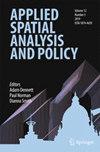In recent years, the impact of urban form evolution on atmospheric pollution has become increasingly prominent. However, previous studies have rarely examined the combined influence of urban spatial forms and human perception on air pollution, while excluding emissions from natural sources. To address this gap, our study investigates the spatiotemporal dynamics of the relationship between anthropogenic PM2.5 pollution and urban form in China from 2000 to 2019. Using the Geographically and Temporally Weighted Regression (GTWR) model, we analyze the spatial heterogeneity of the impact of urban form on PM2.5 pollution. Our findings reveal that anthropogenic PM2.5 concentrations in China exhibited an initial increase, followed by a decline after 2013. In heavily polluted regions, such as the Beijing-Tianjin-Hebei area, annual average concentrations in most areas exceeded 60 μg/m3, with southern Hebei exceeding 100 μg/m3. The northern, southwestern, and Yangtze River Economic Belt regions had relatively lower concentrations, but still ranged between 20 and 60 μg/m3. Increasing urban compactness, reducing urban sprawl, and enhancing the complexity of urban form were found to contribute to lower anthropogenic PM2.5 levels in most cities. Additionally, climate conditions characterized by high precipitation and temperature, along with urban form patterns featuring high density, cohesion, and controlled expansion, were associated with reduced anthropogenic PM2.5 concentrations. In contrast, high humidity, dense populations, a thriving secondary sector, heavy traffic flow, and large, complex urban forms were likely to exacerbate anthropogenic PM2.5 pollution. These findings provide scientific insights for coordinated strategies to control atmospheric pollution in Chinese cities.


